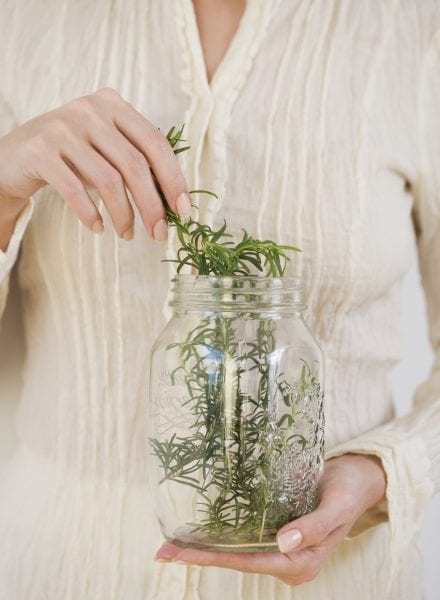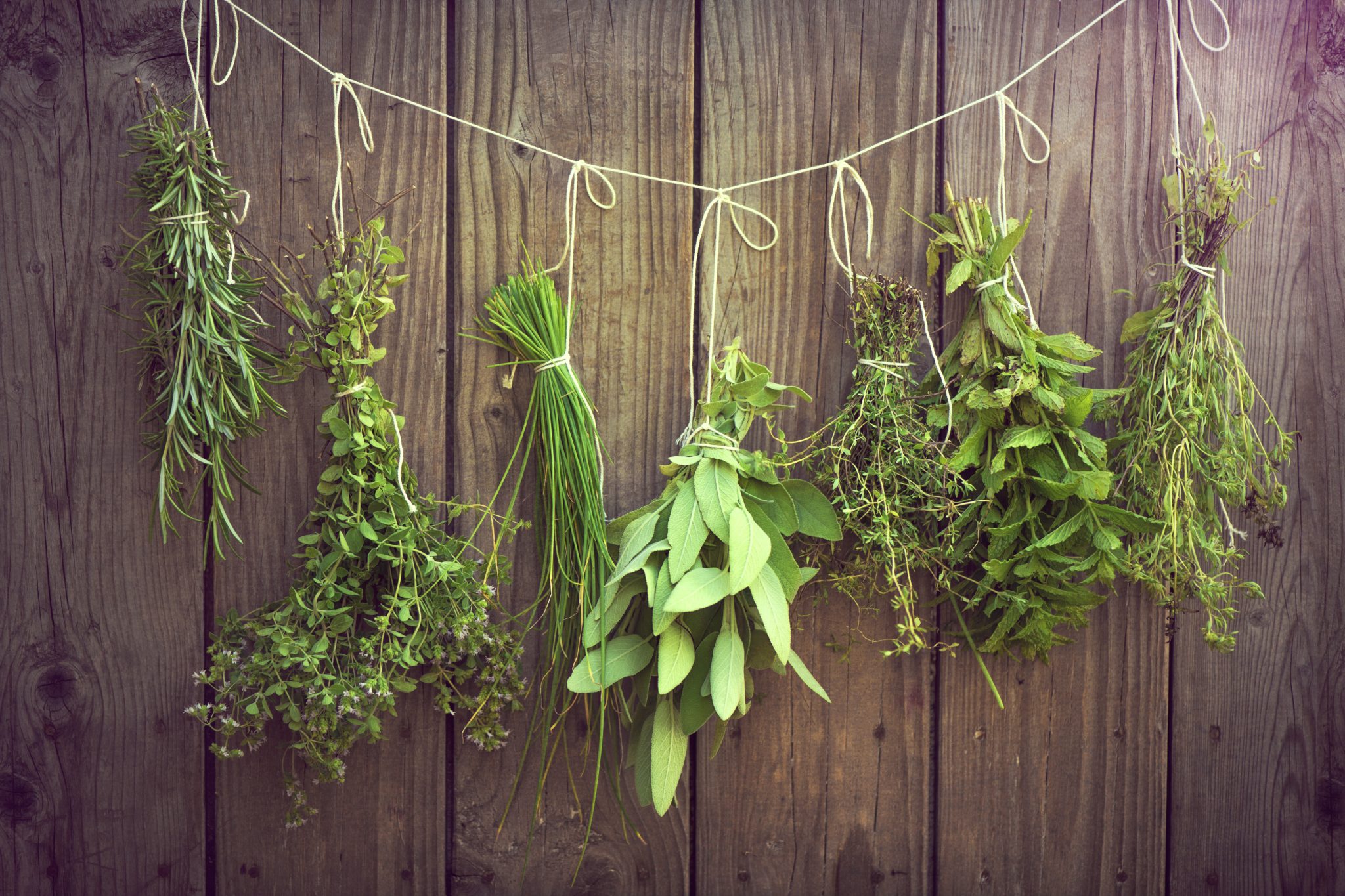Food Safety

Of all the methods of preserving food, drying is the simplest. Dried food is preserved by the removal of water. It weighs less and takes up less storage space than fresh foods. Drying is fairly easy and relatively inexpensive. It requires little equipment.
Once the drying process is started, it should be continued without interruption. Why? Because molds can grow on partially dried foods held at room temperature. This can cause spoilage.
Sun drying is the least expensive way to dry herb leaves and seeds. But if there is any chance of rain, excess moisture, or dew, you must use your oven to do the drying. Sun drying can also cause herbs to lose flavor and color; therefore, it is not a favored recommended method. Oven drying is best for herb roots. It generally takes 3 or 4 days to complete the sun drying process. Oven drying should be complete in several hours.
How to Dry
No pretreatment is necessary. Simply wash leaves, if needed, and scrub roots with a vegetable brush to remove dirt. Pat dry with paper towels.
Herb Leaves: Includes basil, chervil, lemon verbena, marjoram, parsley, rosemary, sage, summer savory, and thyme.
Cut the leaves for drying just before blossoming time when the plant’s stock of essential oils is at its highest. Cut them on a hot, dry day as soon as the dew is off the plants. The tip growth is best for drying, so cut the stems about 6 inches below the flower buds. Gently rinse leaves in cool water. Remove moisture by gently shaking or patting dry. Excess moisture will increase drying time.
Tie the leaves in small bunches, and hang them in the sun just until the water evaporates. Then move them out of the sun to a warm, dry, well-ventilated place away from any bright light. Hang the bunches with the leaves down so oils will flow from the stems into the leaves. To prevent dust accumulation, place a brown paper bag around the leaves. Cut holes in the bag for circulation.
Thyme, parsley, lemon verbena, rosemary, and chervil may also be dried by removing the leaves from their stems and spreading them in single layers on screen or net trays. Leaves are best when dried in 3 or 4 days. If they are not entirely dry in 2 weeks, place them in a 100-degree F oven until thoroughly dry. When dry, remove the leaves from the stems.
Herb Seeds: Includes anise, caraway, coriander, cumin, dill, and fennel.
Harvest the herbs when the seed pods or heads have changed color but before they begin to shatter. Spread the pods in single layers on screen or net trays. When thoroughly dry, rub the pods between the palms of your hands to remove seeds.
Another way to dry seeds is to hang the whole plant upside down inside a paper bag. The bag will catch the seeds as they dry and fall from the pods.
Herb Roots: Includes angelica, burdock, comfrey, ginger, ginseng, onion, and sassafras.
Dig the roots and cut them off during the plant’s dormant stage. This is usually during fall and winter when there is sufficient food stored in the plant. Cut only a few tender roots from each plant. Scrub them with a vegetable brush to remove the dirt. Leave thin roots whole, but slice thick roots lengthwise for quicker drying.
Turn oven to warm or the lowest possible setting. Heat that is too high will cause the oils in the roots to dissipate, reducing the flavors. Place whole roots or slices on a baking sheet and place in warm oven. Leave the oven door open a crack, if possible. Dry roots in the oven for 6 to 8 hours, depending on the thickness of the roots or root slices. Roots should be hard and brittle when dried.
Drying Herbs in a Microwave Oven
 Microwave ovens are a fast way to dry herbs. This is best done when using small quantities at a time. Take extreme caution to prevent scorching, fire, and possible damage to the microwave. Follow the directions that come with your microwave oven.
Microwave ovens are a fast way to dry herbs. This is best done when using small quantities at a time. Take extreme caution to prevent scorching, fire, and possible damage to the microwave. Follow the directions that come with your microwave oven.
Testing for Dryness
Test herb leaves, seeds, and roots for dryness before storage. Place them in tightly sealed jars in a warm place for about 1 week. Check the jars regularly for moisture. If moisture appears on the inside of the glass or under the lid, remove contents for further drying. Otherwise, there is a chance of mold growth.
Pasteurizing Herbs
Before storing, all herbs dried in the sun or open air should be heated in an oven to destroy insects and insect eggs. Heat for 10 minutes at 160 degrees F. Cool herbs and package immediately.
Storage
Store dried foods in dark glass jars or in tins in a cool, dry, dark place. Heat affects quality. If dried food is kept cool, it keeps longer. Do not store in cardboard or paper containers because they absorb oils and leave dried herbs tasteless. Leaves retain oils better if stored whole and crushed right before use. Seeds should also be stored whole and ground shortly before use.
Use
Dried herbs are most often used in soups, sauces, stews, or casseroles. You might also include them in recipes for meat pies and other main dishes. To substitute dried herbs for fresh ones, use 1⁄3 to 1⁄2 teaspoon of dried herbs for 1 tablespoon of fresh.
Edited by Janice Hall, Regional Extension Agent, and Jean Weese, Extension Food Scientist, Professor, Nutrition and Food Science, Auburn University. Written by Evelyn Crayton, former Extension Assistant Director for Family and Community Programs, Auburn University
Reviewed August 2021, Drying Herbs, HE-0605

